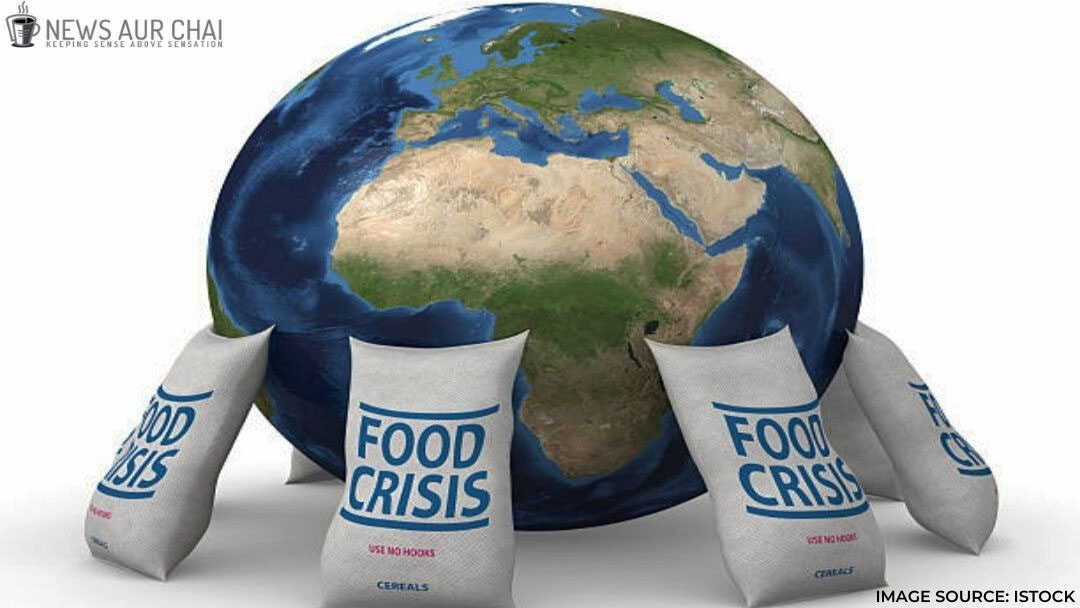
With the advent of novel Coronavirus, the world population went under lockdown, the food industry started facing crisis–the local supermarkets were faced with a shortage of food supplies, while food producers were facing surplus. However, as various sectors of the hospitality industry including restaurants, hotels, bars are shutdown; events, conferences, are called off, food producers are warning about having too much stock that would most likely end up wasted.
Closing down of restaurants led to a heavy impact on related industries of food production, liquor, wine, and beer production, farming, fishing, and food and beverage shipping.
According to Peter Alexander, Global Food Security Expert at University of Edinburgh days that free-market, just-in-time logistical systems present in industrial areas are capable of handling disruptions at a particular place or sudden shortages of certain commodity, but are powerless in front of systematic shock with no slack in the system and no supply reserves for back up.
Panic-buying also resulted in creating artificial shortages of good supply at several places. There has also been some supply chain disruptions for some products.
The Food and Agriculture Organization of the United Nations (FAO) said, “Supermarket shelves remain stocked for now, but a protracted pandemic crisis could quickly put a strain on the food supply chains, a complex web of interactions involving farmers, agricultural inputs, processing plants, shipping, retailers and more.
Impact of pandemic on food industry
Governments have declared complete lockdowns with strict border closures, restricted movements, and shipping and aviation industries being grounded. This had made international food production and import-export very difficult, and the countries with limited alternative food sources are facing a high risk.
UN’s Committee on World Food Security (CFS) highlighted that increased instability in food security would delve a major blow to the poorest citizens.
Private companies have also expressed their concerns over the looming issue. An open letter addressed to world leaders from politicians, scientists, and companies including Unilever and Nestle urges businesses, organizations, governments, civil society, international agencies to adopt immediate, coordinated measures to contain the Coronavirus spread before it turns into a “global food and humanitarian crisis”.
Condition of the food industry in India
In India, the poultry and seafood industry are major victims of the pandemic. The demand for chicken has reportedly gone down by around 30 per cent in March due to rumours about the virus spreading through the meat. As a result, it would take a while for the Rs. 80,000 crore chicken industry to recover.
In 2018-19, seafood exports from the top markets–USA, European Union and China–brought in Rs. 46,600 crore according to Maine Products Export Development Authority. This demand for export would be greatly hampered due to COVID-19 outbreak.
Tea-planters are fearing that lockdown could heavily waste the Darjeeling crop. The first wave has already gone unused, and the second is at high risk.
How China’s food industry is doing?
China’s modern technological advances and its efforts to improve food security by spending tens of billions of dollars in the past decade to purchase major seed businesses, have somewhat helped to reduce the impact on its food industry. As per FAO report, the Chinese central government has distributed 20 million dollars in subsidies to revive agriculture and also in technological devices like agricultural drones and uncrewed vehicles to continue production without human involvement.
Australia’s exports are under pressure with the aviation industry being suspended. About two-thirds of its agricultural produce is exported, and the country acts as a significant supplier for the Asia Pacific region. As international travel is slashed and export rates are hiked, the export of food, comprising 14.5 per cent of Australia’s exports, is under major threat.
While countries like Hong Kong and Singapore have resources to buy their food from alternate sources in case their normal supply lines are compromised, it is challenging for import-reliant, low-income countries like Pacific Islands to thrive in the given situation.
Countries without solid economic bases like Kiribati, Micronesia, Tuvalu, are at high risk. These countries are heavily reliant on tourism for their income which is at hold sure to the outbreak. Lack of domestic food production, as well as stalled food import, could lead to severe food insecurity for the already vulnerable populations.
Surplus milk during pandemic:
A real side-effect of the pandemic is an oversupply of milk. With restaurants and coffee shops closed, a large quantity of milk is being wasted. Dairy farmers of America estimated that around 3.7 million gallons of milk are being dumped down drains everyday by farmers due to disrupted supply routes.
UK’s dairy farmers are asking for government aid to address their surplus problems and estimate about 5 million litres of milk could be wasted per week.
All areas of agriculture are impacted. Changing market demand and excess stock are causing major problems to the sector with vegetables and crops left to decompose.
The Silver lining
However, all food products are not facing the dark side of the pandemic. Demand for healthy food products having immunity-boosting properties and organic products has risen. US sales for orange juice has increased by 38 per cent compared to last year.
UN is urging countries to work together on a global level to avoid food crisis. Governments could mobilize food banks, offer cash transfers to vulnerable households, establish emergency food reserves, take steps to support agricultural workers to protect their citizens. Export restrictions and import tariffs could be made lenient to boost international cooperation and ensure food security.






One Comment